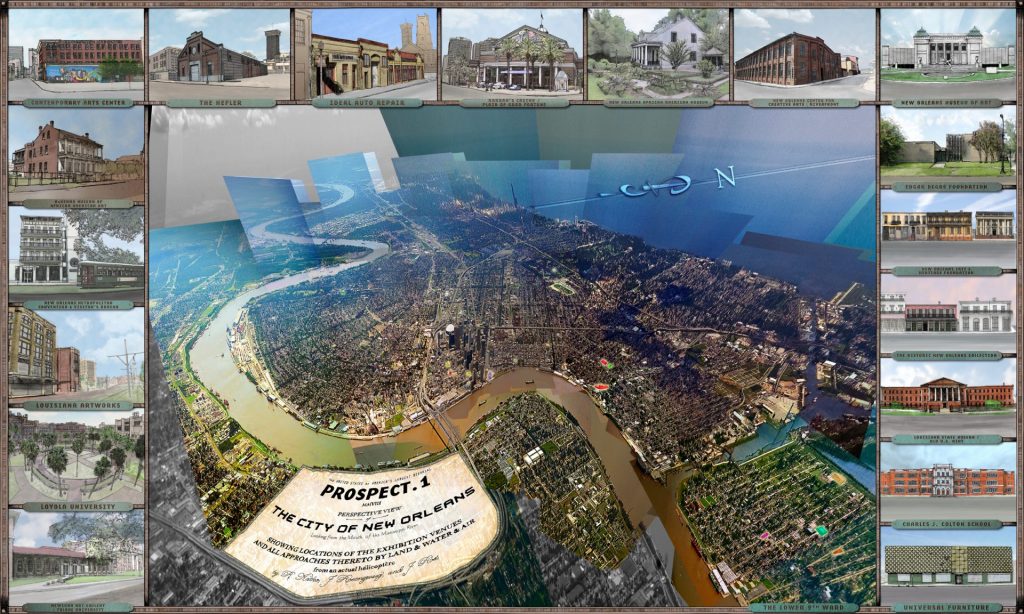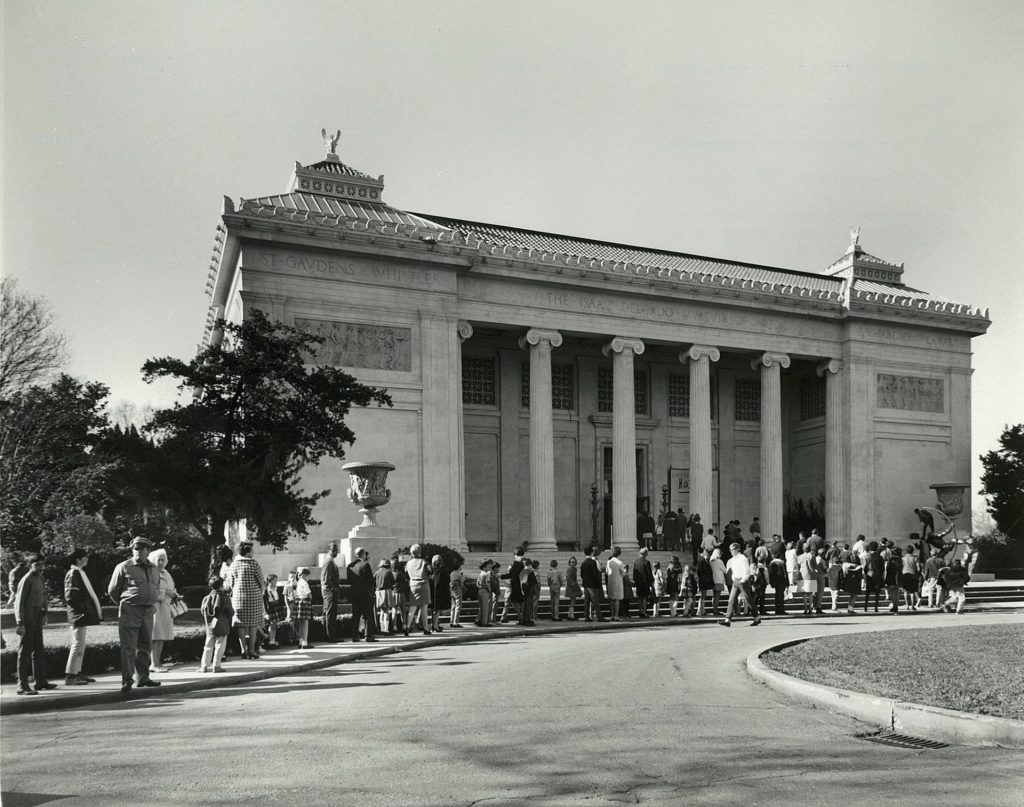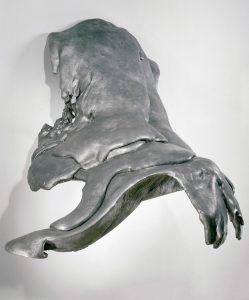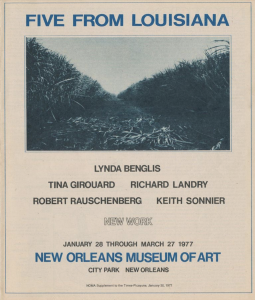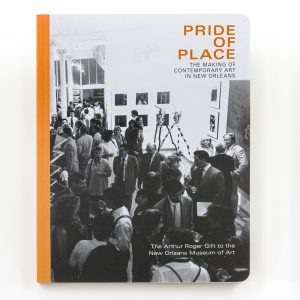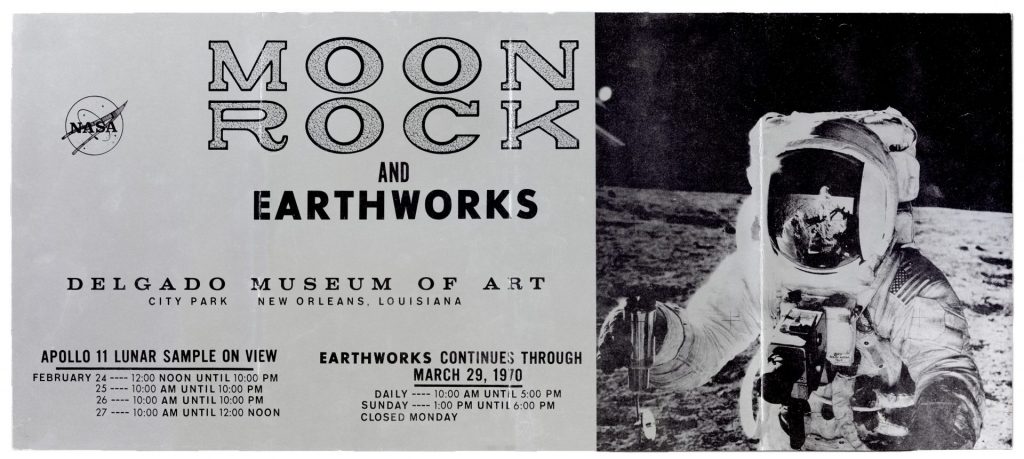
New Orleans Museum of Art, Invitation to “Moonrocks and Earthworks”, 1970, Archives of the New Orleans Museum of Art
In addition to the formative role he played in developing NOMA’s African art collection, Bill Fagaly was an important voice in contemporary art in New Orleans throughout his 50 year career.
New Orleans Triennial
Under the direction of NOMA’s Director, E. John Bullard, Bill evolved New Orleans’s annual Art Association exhibitions, which began as an open-call competition for local, national, and occasionally international artists, into a guest-curated regional Triennial.
At the time the NOMA Triennial ended in 2005, it was the longest continually running series of contemporary art exhibitions in the United States, and had been under Fagaly’s direction for nearly 40 years. Fagaly explained, “After my arrival at the Delgado in 1966, one of the first responsibilities Jim Byrnes turned over to me was the Artists Annual, begun in 1886 by the Arts Association of New Orleans. It has undergone a number of formats over the years. Beginning in 1967, it became a biennial… The format was changed once again in 1980 [under then NOMA Director, E. John Bullard] to become a triennial.” [1]
Before the first NOMA contemporary curator was hired in 2008, Bill conceived some of the most inventive and provocative contemporary art exhibitions in the museum’s history. He also helped foster a new generation of contemporary art galleries, curators, collectors, and supporters.
As a longtime board member and supporter of Prospect New Orleans, Bill continued, to the present, playing a pivotal role in creating a vital culture for contemporary art in New Orleans.
Moonrock and Earthworks
In 1970, Bill organized the first national exhibition of Earth Art, entitled Moonrock and Earthworks. The exhibition accompanied the first national display of a rock from a NASA lunar exhibition.
…in early 1970, the Delgado had a most unusual offer from a most unusual source. The federal government’s National Aeronautics and Space Administration’s Michoud facility in New Orleans, where the large fuel tank for the Apollo manned space flights had been constructed, had been loaned a moon rock brought back by the Apollo 11 astronauts from their historic first landing there less than a year before. The loan of the “lunar sample” from Nasa to the Delgado would be one of the very first public displays of a piece of the earth’s moon anywhere in the world. [2]
On view for only three days, the moon rock attracted thousands of visitors lining up to see it.
Five from Louisiana
A few years later, Fagaly organized Five from Louisiana, an exhibition that featured new works by artists Robert Rauschenberg, Lynda Benglis, Tina Girouard, Richard Landry, and Keith Sonnier. “During my first years in Louisiana, I made frequent trips south and west of New Orleans to explore the swamps, bayous, and prairies of Cajun country and meet the people and experience their food and unique music,” said Fagaly. “Along the way, I met a couple, artists Tina Girouard and Dickie Landry, who were living both in New York City and Cecilia, Louisiana.” Through Girouard and Landry, Fagaly met Keith Sonnier from Mamou, LA. “…it occurred to me that Louisiana was well represented in the New York art world but not in Louisiana and thus merited some special attention,” said Fagaly. [3] He also selected Robert Rauchenberg, born in Texas but raised in Lafayette, and Lynda Benglis, who was from Lake Charles, to complete the group.
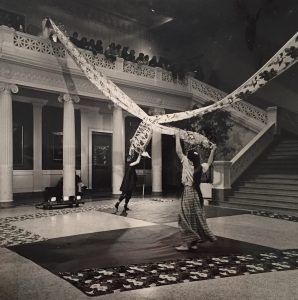
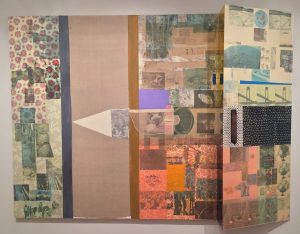
The exhibition catalogue, distributed to 323,000 Times-Picayune subscribers as a Sunday insert, featured essays from art history professor Calvin Harlan, musician Phillip Glass, art editor Liza Baer, art critic Calvin Thompkins, and playwright Tennessee Williams.
Tools of Her Ministry
Bill played a pivotal role championing artists working outside mainstream art contexts. In 1973, Fagaly was invited to be the guest curator of Louisiana Folk Paintings at the American Folk Art Museum in New York that featured the works of Sister Gertrude Morgan, Clementine Hunter, and Bruce Brice. The exhibition sparked a rise in interest in these artists, particularly in Sister Gertrude Morgan, whose work was later featured in several significant exhibitions at institutions across the country. In 1988, Fagaly organized a small exhibition at NOMA of Morgan’s work, borrowing paintings from local collectors.
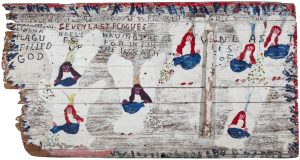
Sister Gertrude Morgan, Seven Last Plagues, c. 1970, Acrylic on weathered wood door, 32 x 60 inches, New Orleans Museum of Art, Gift of Preservation Hall in memory of Allan Jaffe
Years later, Fagaly returned as guest curator for Tools of Her Ministry: The Art of Sister Gertrude Morgan at the American Folk Art Museum, which was on view from February through September of 2004. The first comprehensive retrospective of Morgan’s paintings, it was the culmination of three decades of Fagaly’s research into Sister Gertrude Morgan’s life and art.
Of Morgan, Fagaly said:
I am privileged to have known Sister Gertrude Morgan for the last twelve years of her life. She was my first exposure to the field of folk art and the spark of my lifelong interest in the work of contemporary American self-taught artists. She had a strong effect on people—like most who were acquainted with her, I was awed by her powerful presence and intimidated by her dogged determination to spread the gospel… I always considered it an honor to be in her company, and knowing her has enriched my life and my own beliefs. [4]
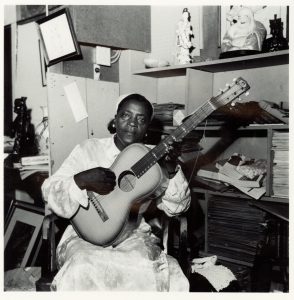
Michael P. Smith, Sister Gertrude Morgan, 1973, Photograph by Michael P. Smith © Historic New Orleans Collection, 2000.78.8.77
In 2017, Bill wrote about his experiences working in contemporary art in New Orleans in an essay in NOMA’s catalogue Pride of Place: The Making of Contemporary Art in New Orleans, which celebrated New Orleans gallerist and collector Arthur Roger’s transformational gift of his entire personal art collection to NOMA.
[1] Fagaly, William. “The Night Crawler King: Memoirs of an Art Museum Curator.” University Press of Mississippi/Jackson. 2021.
[2] Fagaly, William. “The Night Crawler King: Memoirs of an Art Museum Curator.” University Press of Mississippi/Jackson. 2021. [3] Fagaly, William. “The Night Crawler King: Memoirs of an Art Museum Curator.” University Press of Mississippi/Jackson. 2021. [4] Fagaly, William. “Tools of Her Ministry: The Art of Sister Gertrude Morgan.” American Folk Art Museum, New York, Rizzoli International Publications, New York. 2004.NOMA is committed to uniting, inspiring, and engaging diverse communities and cultures through the arts — now more than ever. Your gift will make a direct and immediate impact as NOMA welcomes our community back to the museum and sculpture garden, plans new exhibitions, and develops virtual and at-home arts education resources for school partners.
